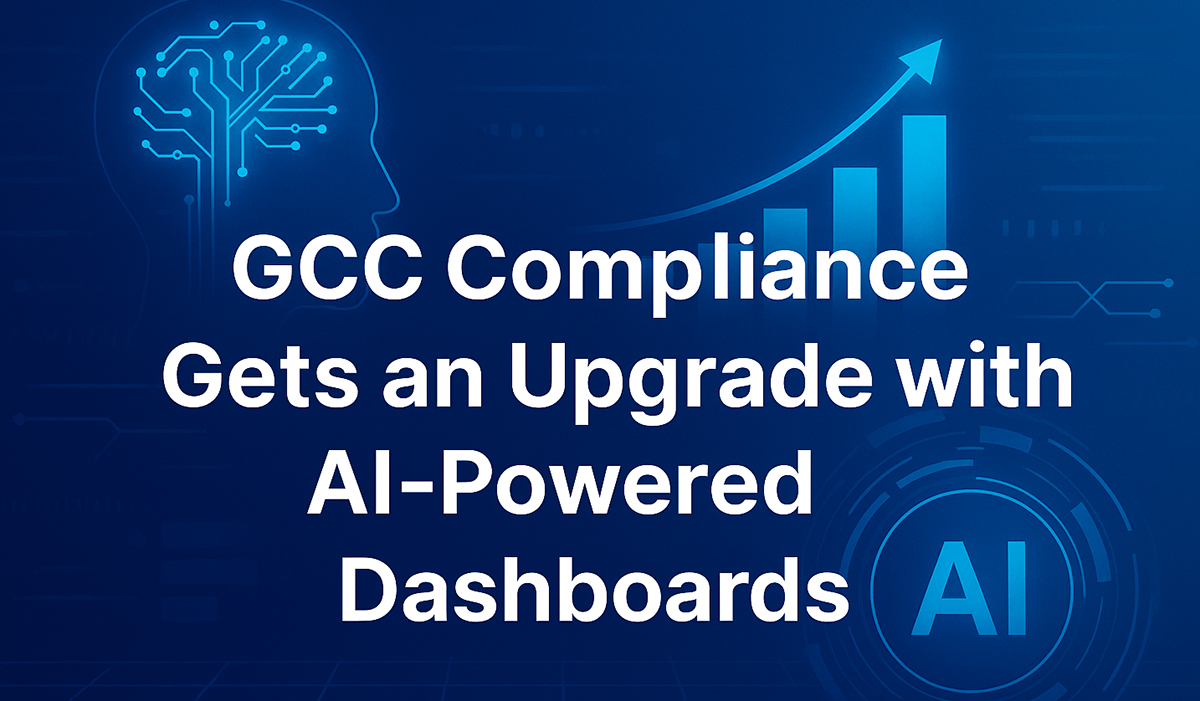 Introduction
Introduction
In the heart of every modern enterprise lies its Global Capability Center (GCC)—a high-performance engine designed to drive operations, innovation, and strategic excellence. As these centers evolve from cost-saving units to strategic powerhouses, the need for intelligent data governance and operational clarity becomes undeniable. GCC compliance plays a critical role in ensuring these transformations meet regulatory standards and internal benchmarks. This is where AI-powered dashboards step in, bridging the gap between data complexity and actionable insight, while strengthening GCC compliance through real-time monitoring, transparent reporting, and predictive analytics.
The Evolving Role of GCCs in Enterprise Strategy
Gone are the days when GCCs were mere back offices. Today, they play a critical role in shaping enterprise decisions. From managing complex workflows to enabling digital transformation, GCCs now sit at the core of business intelligence. To keep pace with this elevated responsibility, GCCs must harness technology that scales with both their function and ambition.
The Data Overload Dilemma
Data is abundant—but intelligence is not. GCCs operate across diverse functions, generating torrents of information every second. Sifting through this deluge manually leads to delays, missed insights, and compliance vulnerabilities. Spreadsheets and legacy tools are no longer adequate to tame this data flood.
Why Manual Reporting No Longer Cuts It
Manual reporting is riddled with human error, inefficiency, and bias. It’s reactive instead of proactive, static instead of adaptive. Business agility demands reporting that is dynamic, trustworthy, and real-time—capabilities only AI can provide with precision.
Compliance in the Age of Complexity
The regulatory landscape is a minefield. From GDPR to SOX to sector-specific mandates, compliance requirements grow more intricate by the day. GCCs, operating across jurisdictions, need systems that can automatically track, audit, and validate against evolving regulations.
Navigating Ever-Changing Regulatory Landscapes
AI-powered dashboards enable continuous compliance by integrating live regulatory feeds, mapping policy changes, and issuing proactive alerts. They reduce the compliance burden by turning what used to be a manual headache into a digital autopilot.
Traditional Dashboards: Where They Fall Short
Traditional dashboards provide static snapshots, not dynamic insights. They rely on manual updates, lack context, and quickly lose value as data changes. For GCC compliance, this can mean outdated insights and missed regulatory risks.
Static Displays in a Dynamic World
In a world where decisions need to be made at the speed of thought, static dashboards are relics of the past. They can’t predict trends or correlate variables. AI dashboards, on the other hand, evolve with data—learning, adapting, and guiding.
Enter AI-Powered Dashboards
AI-powered dashboards transform data into dynamic intelligence. They use machine learning, NLP, and advanced algorithms to identify anomalies, generate forecasts, and prescribe actions. These tools are not just passive viewers but intelligent advisors.
From Data to Decisions in Real Time
What once took hours—data cleaning, trend plotting, report compiling—now happens in real time. Decision-makers are empowered with insights that are not only timely but tailored to strategic outcomes.
How AI Enhances Compliance Monitoring
AI doesn’t just observe—it understands. Through contextual analysis, AI dashboards monitor adherence to compliance frameworks, flag deviations, and learn from past violations to prevent future ones.
Smart Alerts, Policy Mapping, and Risk Detection
With smart alerting systems, compliance risks are detected before they escalate. Dashboards map organizational policies to regulatory requirements, providing a clear compliance trajectory. Risk detection becomes anticipatory, not reactionary.
AI in Reporting: Automation with Accuracy
AI eliminates the monotony of data compilation. Reports are generated on-the-fly, free from copy-paste errors and subjective bias. This fosters confidence in numbers and saves time for strategic thinking.
Reducing Human Error While Speeding Up Workflows
Automated reporting not only expedites delivery but ensures consistency. Stakeholders receive the right reports at the right time—accurate, formatted, and personalized to their needs.
Advanced Analytics: Seeing Beyond the Numbers
Numbers tell stories—but only if you know how to read them. AI introduces capabilities like sentiment analysis, root cause discovery, and real-time benchmarking. It sees patterns the human eye misses.
Predictive Intelligence and Root Cause Analysis
Rather than asking what happened, AI-powered analytics ask why it happened—and what might happen next. This foresight turns reports into roadmaps.
Business Intelligence Reimagined
BI is no longer about pretty graphs. It’s about competitive advantage. AI infuses dashboards with cognitive ability—transforming them from retrospective tools into strategic enablers.
From Insight Generation to Strategic Execution
AI-powered dashboards don’t stop at telling you what’s wrong. They recommend actionable next steps, simulate impact scenarios, and even initiate workflows automatically.
Implementation Considerations for GCCs
Deploying AI dashboards requires more than just software. GCCs must prepare their tech stacks, redefine roles, and select partners who understand both technology and business.
Data Integration, Talent Upskilling, and Vendor Selection
Integrating disparate data sources is foundational. Upskilling teams ensures effective dashboard usage. Choosing vendors with strong AI credentials and domain expertise minimizes friction and accelerates ROI.
Challenges on the Road to AI Maturity
As with any innovation, AI dashboard implementation isn’t without hurdles. Concerns about data security, platform scalability, and cultural resistance often surface.
Security, Scalability, and Cultural Shifts
Building trust in AI involves transparent models and robust cybersecurity. Scaling requires cloud-native architectures. Shifting culture demands leadership buy-in and clear communication on AI’s value.
Conclusion
The future of GCC performance hinges on how intelligently they manage their data. AI-powered dashboards are not just helpful—they are essential. As enterprises seek clarity in a chaotic data landscape, these dashboards stand out as the compass guiding them to strategic excellence.
Why AI Dashboards Are Mission-Critical for GCCs
They ensure compliance, accelerate decisions, and uncover insights buried in complexity. For any GCC aiming to be future-ready, investing in AI dashboards is not optional—it’s imperative.
Stay updated! Follow us on social media! Facebook, Twitter, LinkedIn
Check out our newest blog entry (Why App Architecture Is Crucial in 2025)
Subscribe to get free blog content to your Inbox [email-subscribers-form id=”1″]




